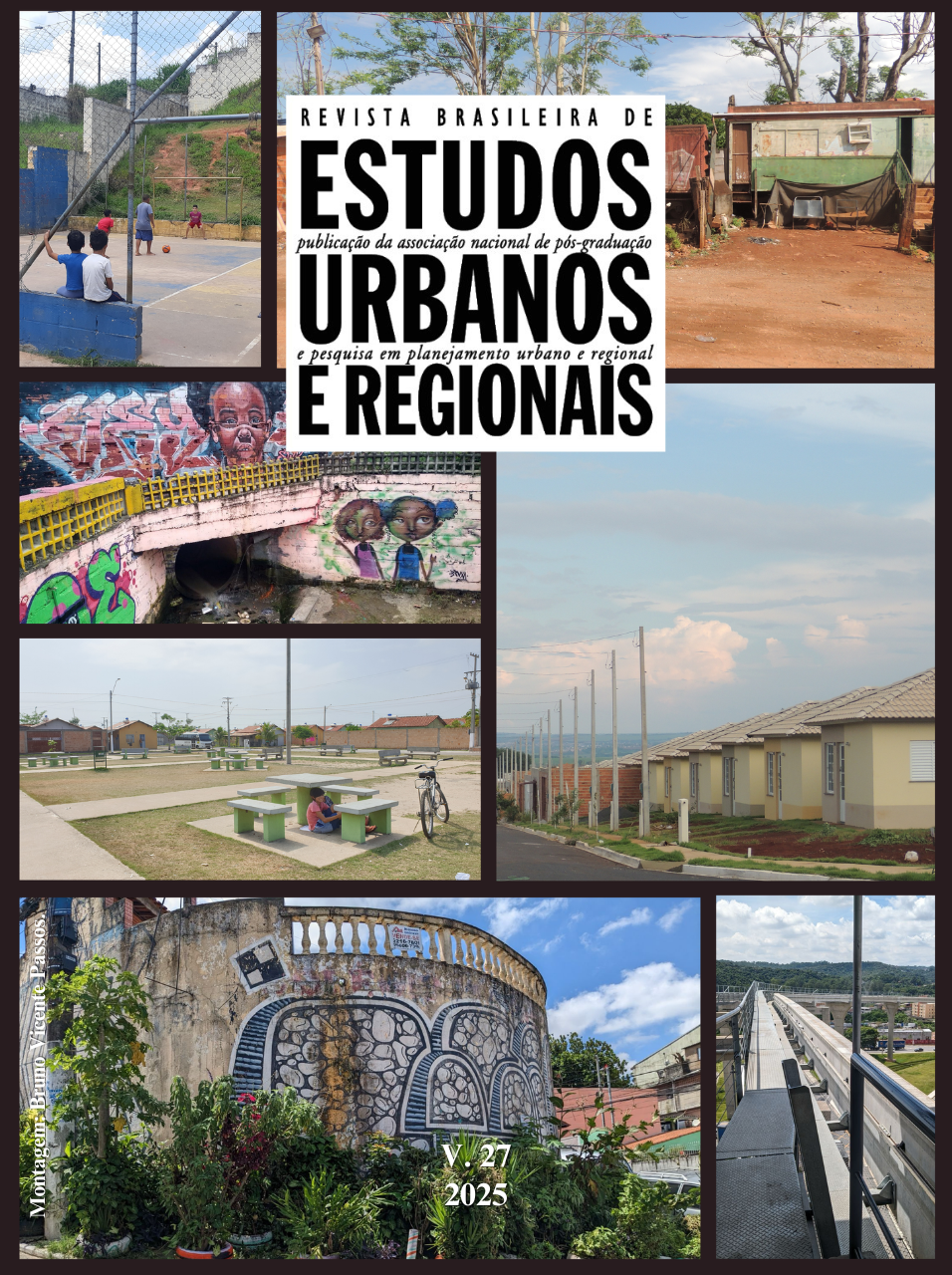Urban bioregion: the conceptual and design trajectory in the texts of Alberto Magnaghi
DOI:
https://doi.org/10.22296/2317-1529.rbeur.202513ptKeywords:
Methods Techniques and Planning Instruments, Regional Planning, Urbanization, Alberto Magnaghi, Urban bioregion, Ecoterritorialism, Figurative representationAbstract
Contained within the discussions on contemporary urbanization, critiques of the center-periphery model of the metropolis form, and debates on current environmental challenges, Alberto Magnaghi (1941–2023) proposed a paradigm shift, replacing the regulations that govern contemporary urbanization with a new approach centered around the concept of the urban bioregion. Through an analysis of Magnaghi’s seminal works, this article aims to present the conceptual development of the urban bioregion, both in its theoretical and practical aspects, underscoring its significance within an ecoterritorialist framework and proposing a figurative representation model. Thus, the unifying nature of the urban bioregion is emphasized, since it places equal importance on both humans and nature, while its revolutionary character challenges prevailing economic, political, productive, and habitational logics. Moreover, the article proposes adopting minimal bioregional units to identify urban bioregions, and highlights the reflective, complex, and relational nature of the concept through a figurative representation model.
Downloads
References
ANDRADE, B. A.; ALMEIDA, R. H. Patrick Geddes e a escola territorialista italiana: aproximações conceituais e metodológicas. Reflexões a partir da participação de crianças na representação de valores patrimoniais da cidade de Santa Leopoldina–ES/Brasil. PosFAUUSP, v. 39, n. 23, p. 120-37, 2016.
GOMES, P. C. C. Geografia e modernidade. 6. ed. Rio de Janeiro: Bertrand Brasil, 2007.
MAGNAGHI, A. Il progetto locale: verso la coscienza di luogo. Torino: Bollati Boringhieri, 2000.
MAGNAGHI, A. The Urban Village: A Charter for Democracy and Local Self-Sustainable Development. London: Zed Books, 2005.
MAGNAGHI, A. Il progetto locale: verso la coscienza di luogo. Torino: Bollati Boringhieri, 2010.
MAGNAGHI, A. Il progetto della bioregione urbana: regole statutarie e elementi costruttivi. La Regola e Il Progetto: Un Approccio Bioregionalista alla Pianificazione Territoriale, Florença, v. 21, p. 3-42, 2014.
MAGNAGHI, A. A biorregião urbana: pequeno tratado sobre o território, bem comum. Matosinhos: Escola Superior de Artes e Design (Esad), 2017.
MAGNAGHI, A. La bioregione urbana, strumento multidisciplinare del progetto eco-territorialista. In: MAGNAGHI, A.; MARZOCCA, O. (Orgs.). Ecoterritorialismo. Territori, v. 37, p. 89-102, 2023.
MAGNAGHI, A.; MARZOCCA, O. Una costellazione di saperi per l’autogoverno e la cura dei luoghi come beni comuni. In: MAGNAGHI, A.; MARZOCCA, O. (Orgs.). Ecoterritorialismo. Territori, v. 37, p. VII-XIII, 2023.
MARZOCCA, O. Territorialismo, eco-territorialismo, bioregionalismo. Genesi, contesti, motivazioni. In: MAGNAGHI, A.; MARZOCCA, O. (Orgs.). Ecoterritorialismo. Territori, v. 37, p. 1-15, 2023.
RAGONHA, J. Planejar com a paisagem: reflexões historiográficas e contemporâneas sobre a região. 2019. Dissertação (Mestrado em Arquitetura e Urbanismo) – Instituto de Arquitetura e Urbanismo, Universidade de São Paulo, São Carlos, 2019.
RPA. Regional Plan Association. About RPA, 2024. Disponível em: https://rpa.org/about/about-rpa. Acesso em: 4 jan. 2024.
SANTOS, M. A natureza do espaço: técnica e tempo, razão e emoção. 4. ed. São Paulo: Edusp, 2006.
SANTOS, M. Técnica, espaço, tempo: globalização e meio técnico-científico-informacional. 5. ed. São Paulo: Edusp, 2013.
TURCO, A. Il luogo, bene comune. In: TURCO, A. (Org.). Paesaggio, luogo, ambiente. La configuratività territoriale come bene comune. Milano: Unicopli, 2014.
WELTER, V. Biopolis: Patrick Geddes and the City of Life. Massachusetts: MIT Press, 2002.
Published
How to Cite
Issue
Section
Categories
License

This work is licensed under a Creative Commons Attribution 4.0 International License.
Authors who publish in this journal agree to the following terms:
1) Authors who publish in RBEUR retain the rights to their work and assign to the journal the right to first publication, performed under the Creative Commons Attribution License that allows work to be shared and assures the recognition of authorship and of the original publication vehicle, to RBEUR.
2) Authors are free to assume additional contracts separately, for publication and non-exclusive distribution of the version of the work published in this journal (e.g., publishing in an institutional repository or as a book chapter), reaffirming the authorship and recognition of the original publication vehicle, to RBEUR.












.png)
